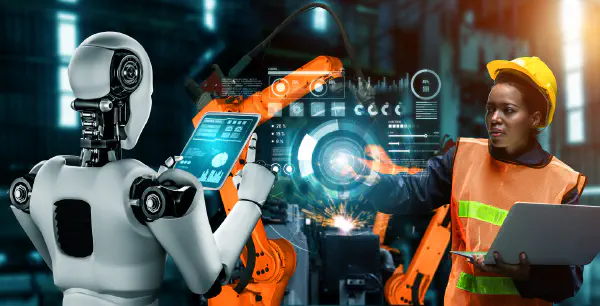
Image processing plays a vital role in robotics by providing robots with the ability to interpret and understand their surroundings through visual data. Here’s how image processing is helping in robotics
🔍Object Detection and Recognition: Image processing techniques enable robots to detect and recognize objects in their environment. By analyzing images from cameras or sensors, robots can identify and locate objects, which is crucial for tasks such as picking and placing items in manufacturing or navigating through cluttered environments.
🧭Navigation and Localization: Robots use image processing to navigate and localize themselves within their surroundings. Vision-based algorithms can identify landmarks or patterns in the environment, helping the robot determine its position and plan its movements accurately.
🛑Obstacle Avoidance: Image processing allows robots to detect and avoid obstacles in real-time. By analyzing images or depth maps, robots can make dynamic decisions to change their path or speed to avoid collisions while moving through complex environments.
👐Grasping and Manipulation: For robots involved in tasks like robotic arms in manufacturing or healthcare, image processing helps with precise grasping and manipulation. Cameras and vision systems can provide feedback on the position, orientation, and shape of objects, enabling robots to perform delicate and intricate tasks.
🤖Human-Robot Interaction: Image processing is crucial for human-robot interaction. It allows robots to recognize and respond to human gestures, facial expressions, and verbal commands. This capability is especially important in service robots and collaborative robots (cobots).
🔍Quality Control and Inspection: In manufacturing, robots equipped with image processing can inspect products for defects or inconsistencies. They can compare captured images to predefined standards and reject or sort items accordingly, ensuring high-quality production.
🚗Autonomous Vehicles: Image processing is a cornerstone of autonomous vehicles, including self-driving cars and drones. These systems use cameras and sensors to perceive the road, traffic signs, pedestrians, and other vehicles, enabling safe and efficient navigation.
🌳Environmental Monitoring: In fields like agriculture and environmental science, robots equipped with image processing technology can monitor and analyze images of crops, landscapes, or ecosystems. This data helps make informed decisions related to irrigation, pest control, and environmental conservation.
🚁Search and Rescue: Image processing aids in search and rescue operations by helping robots identify and locate missing persons or survivors in disaster-stricken areas. Thermal imaging and computer vision can be particularly useful in low-visibility conditions.
🥽Augmented Reality (AR) and Virtual Reality (VR): Image processing is used in AR and VR applications to blend computer-generated images with the real world seamlessly. In robotics, this technology can enhance the robot’s perception and interaction with the environment.
In summary, image processing plays a pivotal role in robotics by enabling robots to perceive, understand, and interact with their surroundings. It enhances their capabilities in various fields, from manufacturing to healthcare, autonomous vehicles, and beyond, making robots more versatile and effective in a wide range of applications.